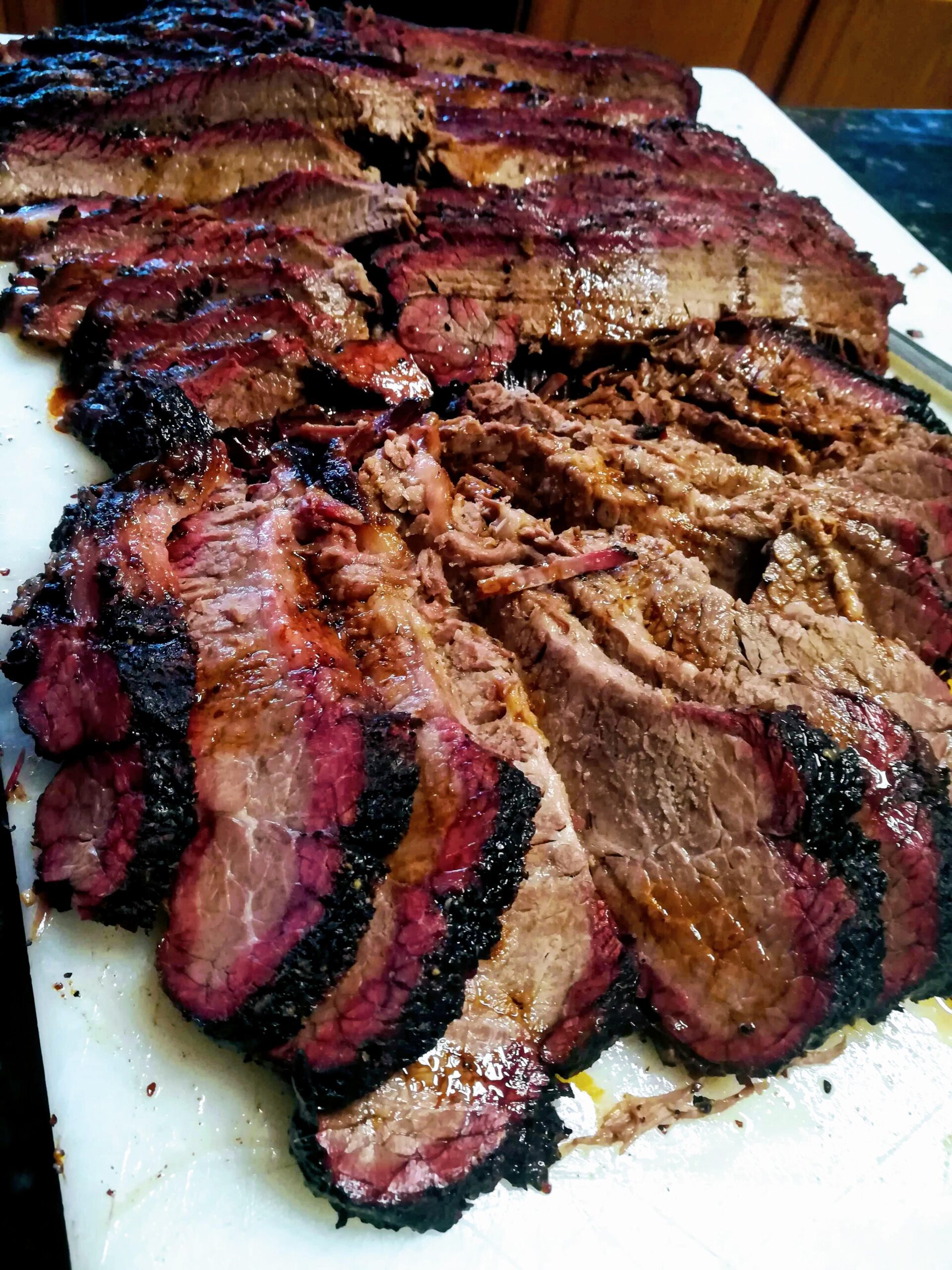Few American food traditions are as venerated as Central Texas-style barbecue. Its elegance lies in its simplicity, with a focus on great beef and the optimal proportion of smoke to seasoning. For anyone who enjoys meat, Central Texas barbecue is an absolute necessity. Whether you’re a seasoned pitmaster or a backyard pit jockey, learning to cook Central Texas-style barbecue will elevate your grill skills. In this guide, we’ll explore its origins, techniques, and a step-by-step recipe to create authentic Central Texas brisket at home.

The Roots of Central Texas-Style Barbecue
Central Texas barbecue has its roots with German and Czech immigrants who made the region their home in the 19th century. They introduced with them the method of smoking meat that transformed into what is now the iconic Texas barbecue culture. Central Texas-style barbecue is different from other barbecue methods that are sauce- or marinade-dependent, however. This one is all about letting the meat take center stage—with a light rub, slow smoking, and after-cooking slicing instead of shredding.
Key Features of Central Texas Barbecue
Meat Selection: The headliner is beef, specifically brisket, although pork ribs and sausage are also favorites.
Seasoning: A basic rub of coarse black pepper and salt is sufficient.
Smoking Technique: Slow-cooked low over post oak wood, which gives a strong smoky flavor.
No Sauce Required: In contrast to Kansas City or Carolina ‘cue, Central Texas-style is based on smoke and seasoning instead of sauce.
How to Prepare Authentic Central Texas-Style Brisket
Ingredients:
1 whole packer brisket (12–15 pounds)
¼ cup coarse kosher salt
¼ cup coarse black pepper
1 tbsp garlic powder (optional, for added depth)
Post oak wood chunks
Equipment Needed:
Offset smoker or pellet smoker
Meat thermometer
Butcher paper (for wrapping)
Sharp slicing knife
Step-by-Step Instructions
1. Preparing the Brisket
Begin with a whole packer brisket, both the point (fattier end) and the flat (leaner end).
Remove excess fat, retaining approximately ¼ inch of fat cap to prevent the brisket from drying out during cooking.
Season the brisket liberally on all sides with a 50/50 combination of coarse salt and black pepper. A pinch of garlic powder can be added if desired.
Let the brisket come to room temperature for approximately 30 minutes before putting it on the smoker.
2. Smoker Setup
Heat your smoker to 225–250°F (107–121°C).
Employ post oak wood chunks for authentic Central Texas flavor. Substitute post oak with hickory or pecan if it is not available.
Position the brisket on the smoker, fat side up, so the fat melts and retains the meat’s juiciness.
3. Smoking the Brisket
Maintain a steady 225–250°F temperature and let the brisket smoke unwrapped for the first 6–8 hours.
After about 5–6 hours, you’ll notice a dark bark forming on the surface—this is a sign of proper smoke absorption.
Once the brisket reaches an internal temperature of 165–170°F, wrap it tightly in butcher paper (not foil) to retain moisture while allowing the bark to stay firm.
4. The Final Stretch
Keep smoking the wrapped brisket until it has an internal temperature of 200–205°F in the thickest section.
To test doneness, insert a probe—it should go in with no resistance, like butter.
5. Resting and Slicing
After cooking, let the brisket rest for at least 1 hour (ideally 2) before slicing. This lets juices redistribute for a moist end product.
Slice against the grain for the most tender bites, with the flat cut into thinner slices and the point into more robust, juicier cuts.
Serving Central Texas-Style Barbecue
Traditional Texas barbecue is served with few accompaniments, emphasizing the bold flavors of the meat. Classic sides are:
White bread or Texas toast
Pickles and onions for acidity and crunch
Coleslaw for a refreshing contrast
Barbecue beans for a hearty touch
Expert Tips for Perfect Brisket
✔ Select the Proper Brisket: Opt for USDA Choice or Prime grade and plenty of marbling.
✔ Patience is a Virtue: Low-and-slow is the key—hurry the cook time and the meat will be tough.
✔ Temperature Control: The use of a digital meat thermometer guarantees accuracy and prevents overcooking.
✔ Don’t Smoke Too Much: A delicate, clean smoke adds to the beef without dominating it.
✔ Wrap at the Right Time: Wrapping too early can cause the bark to soften, while wrapping too late will dry out the meat.
Final Thoughts
Central Texas barbecue is a meal with substance—it’s an ancient tradition that honors humble ingredients, seasoned smoking skills, and forebearance. Practice is necessary to master this style, but the payoff is a juicy brisket that embodies the very essence of Texas barbecue. Get your smoker going, roll with it, and partake in the deep, smoky goodness of a real Central Texas brisket!

Leave a Reply